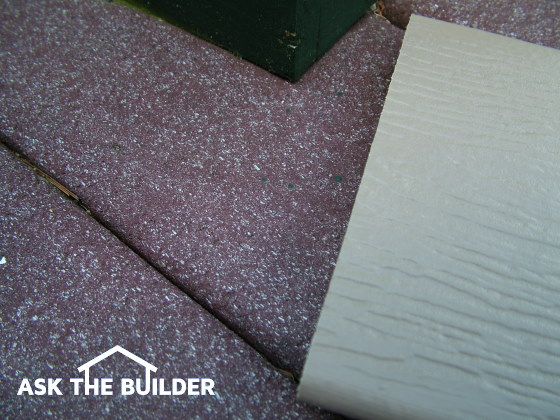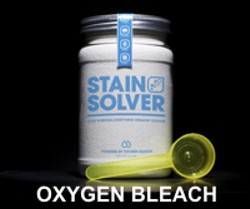Composite Deck

You can see the weather beaten gray wood fibers in this older composite deck. The new sample piece has a coating that shields the wood from the damaging effects of sun and water. PHOTO CREDIT: Tim Carter
DEAR TIM: Composite decking has been on the market for some time. A friend has a composite deck, but it looks shabby and faded. Were composites decks oversold with respect to performance? I’m tired of maintaining my wood deck, but am worried about what composite decking material to purchase. I did some research and discovered that there have been class-action lawsuits, some companies have gone out of business and other products have been pulled off the market by the manufacturers. What do you think is the best composite decking on the market at this time? Sandra G., Monroe, GA
DEAR SANDRA: There are thousands of consumers out there that feel your pain, and thousands more who are suffering because they have composite wood decking that doesn’t look at all the way it did when it was first installed. In fact, the house I’m in right now has a composite wood deck that was installed by the previous owner seven years ago. The finish is blotchy, the exposed wood fibers are gray instead of brown and it’s not the best looking deck by any means. But does this mean I would never have composite decking materials installed on one of my jobs or on another home? No is the answer. Get the right product and you’ll be happy for quite some time.
If you continue your research, you’ll discover that there are many manufacturers of composite deck boards and composite deck railing. Some might say that there are too many, and that we’ll see more companies disappear or get folded into the stronger brands. Be aware of this possibility, and that if you purchase a product that succumbs to market pressure, you may not be able to get replacement material or your warranty can be of little value.
Once you understand how composite decking is made, you can begin to understand why there have been failures and disappointment. It’s most basic form, composite deck boards are made by mixing wood fibers and plastic. It’s similar in some respects to concrete which is a combination of large and small stone, sand, Portland cement and water. The plastic in composite decking is the binder, while the wood fiber acts to provide strength. But be aware there are vastly different grades of plastic and wood fibers. If you start with low-quality ingredients, you end up with a substandard product.
But it’s even more complicated than that. Some of the past failures of composite materials has been traced to the fact that the plastic has not been able to encapsulate and soak into the wood fibers. Water in the wood is usually the demon. Water and plastic repel one another in the manufacturing process. What’s more, if water is in the tiny wood fibers, the plastic simply can’t get to where it needs to go. The top composite decking materials contain wood fibers that are as dry as the Atacama Desert, considered by many to be the driest place on the planet.
But even with the best wood fibers, the best plastic and the best manufacturing process, you can still get a product you might not be happy with. Many of the composite materials end up with exposed wood fibers at the surface. These will discolor over time, and they probably will rot away as they get wet.
One of the most interesting products I’ve seen lately is a composite decking material that uses lots of recycled plastics, high-quality bone-dry wood fibers and has a protective layer of embossed plastic that has a deep wood grain and completely covers the top and sides of the decking. This coating eliminates the possibility of exposed wood fibers and all the issues that go along with it. Because of it’s high amount of recycled plastic content, it’s perhaps one of the greenest composite decking choices you can make.
 Be aware that there is no such thing as maintenance-free decking. You’ll still have to wash your deck periodically to remove dirt and mildew. Often regular liquid dish soap and water will do the job. Be sure to always use the cleaner recommended by the decking manufacturer. If you have mildew problems, understand that trees surrounding your home release aerosol sugars that are food for mildew. Regular dirt and dust can also be food sources. Don’t blame the decking material if you have mildew, as it’s Mother Nature’s fault.
Be aware that there is no such thing as maintenance-free decking. You’ll still have to wash your deck periodically to remove dirt and mildew. Often regular liquid dish soap and water will do the job. Be sure to always use the cleaner recommended by the decking manufacturer. If you have mildew problems, understand that trees surrounding your home release aerosol sugars that are food for mildew. Regular dirt and dust can also be food sources. Don’t blame the decking material if you have mildew, as it’s Mother Nature’s fault.
Be very careful when you make your purchasing decision. Not all composite decking products have the same density and strength. Some products can be easily dented with a hammer or incur damage from objects you might drop. I urge you to buy just one piece of all the products you’re thinking of using. Do your own drop tests using common things you might carry on your deck like a filled propane container, tools, etc. Drop them onto your sample pieces and see what happens. Pound the materials with a common hammer.
Cooking grease can be a real issue. If you have a composite deck that has exposed wood fibers, the grease can soak into the wood fibers. Use an oxygen bleach and warm water to get rid of these stains. The oxygen bleach will also remove the gray coloration from any exposed wood fibers if you own a weathered composite deck.
Read my Composite Deck Feedback article in the June 10, 2009 Newsletter. Barbara had a $31,000 decking error!!
Column 781

10 Responses to Composite Deck